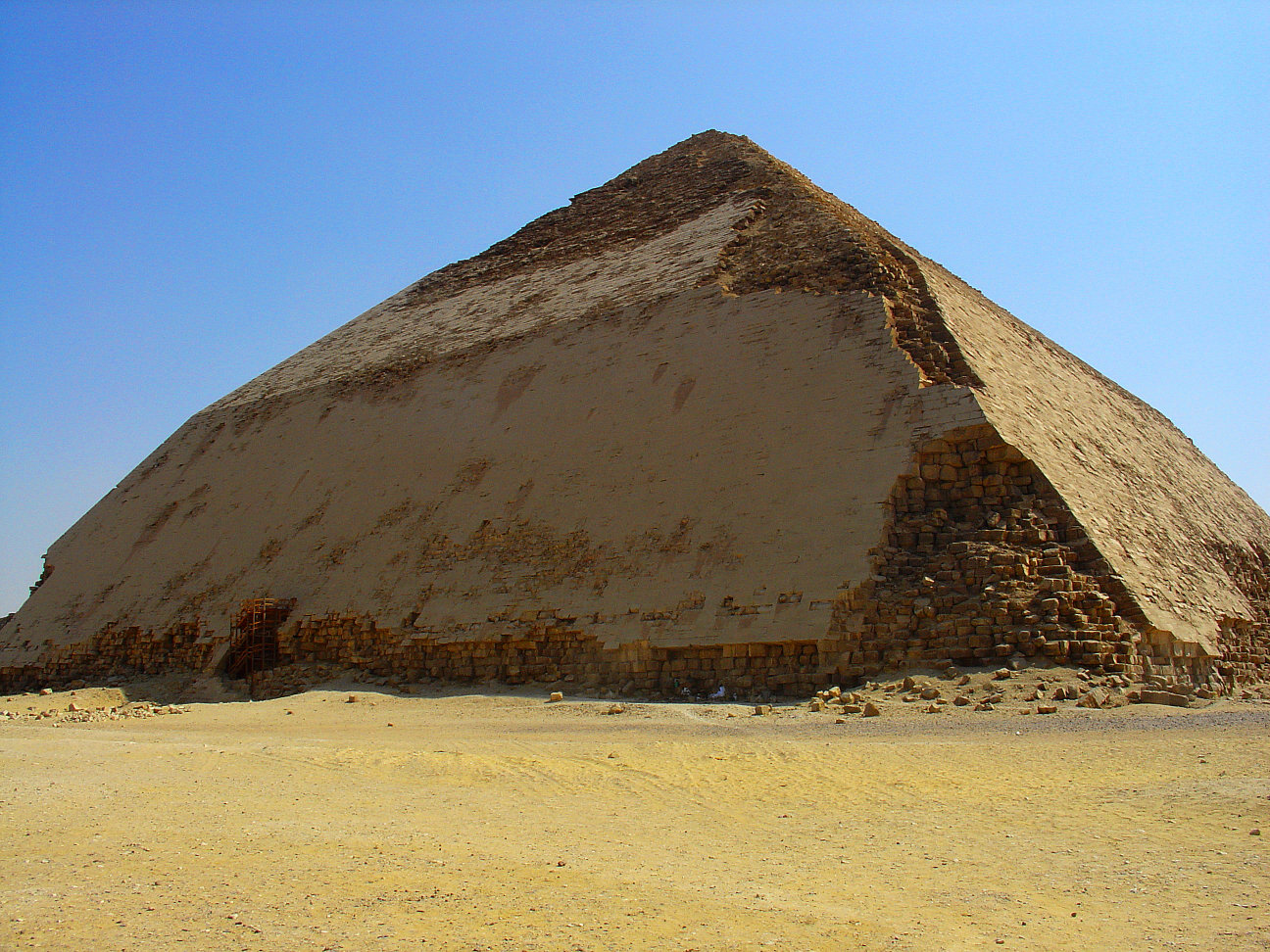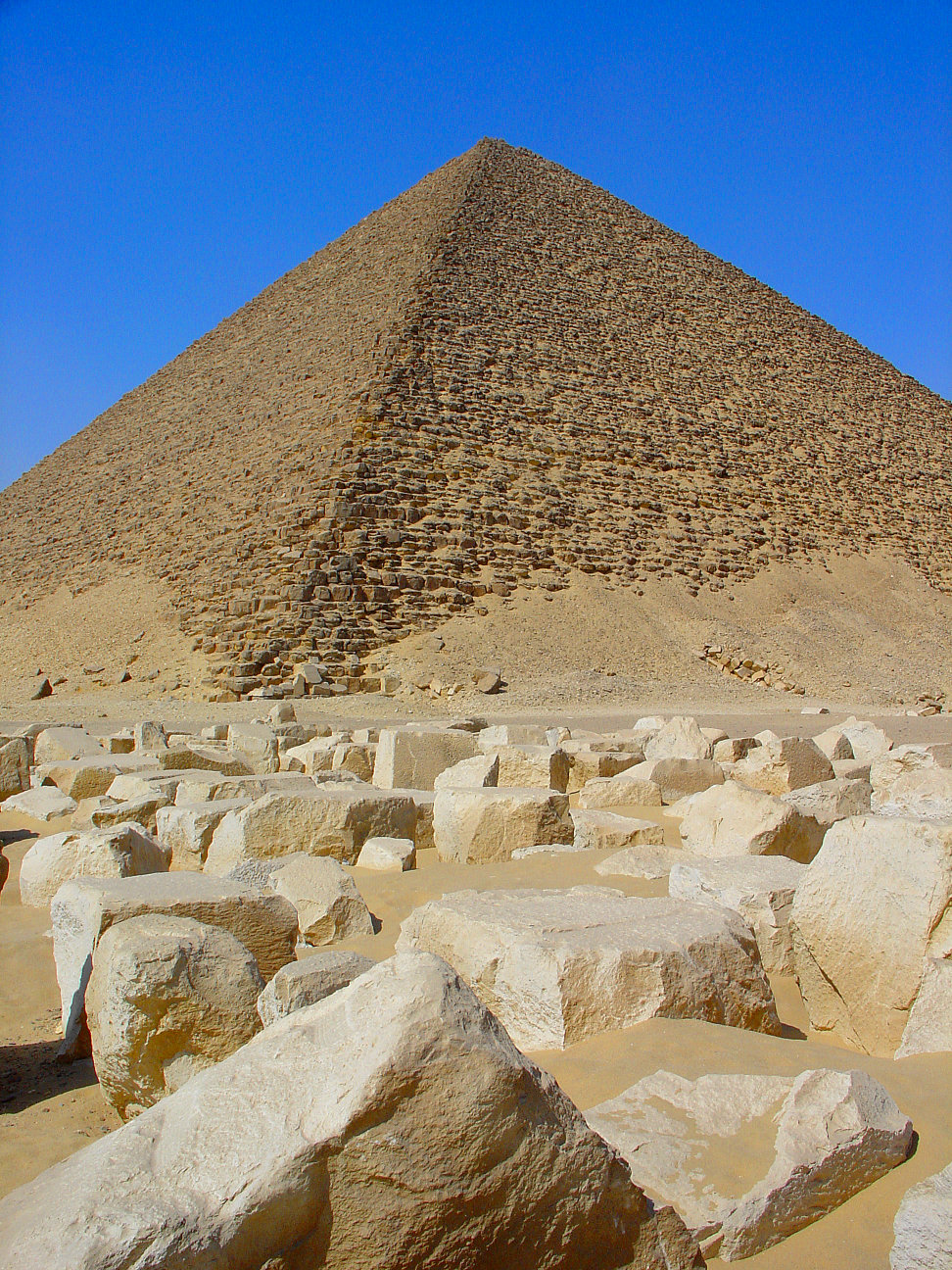The 4th Dynasty begins in 2613 BC with Snefru and was solidified by marrying the previous Pharaoh's daughter, Hetep-heres, who in turn would give birth to the famous Khufu. Snefru was quite active during his reign. He would launch expeditions into Lebanon and build the first true pyramids.
Snefru appears to have made quite the impression in the Sinai. In the Wadi Maghara there are inscriptions bearing his titles including "Smiter of Barbarians", talk about fancy. Snefru was also worshiped as a god in the Sinai. His expeditions were no doubt important, but he is perhaps best known as the builder of the Bent and Red pyramids.
The Bent and Red Pyramids were the first true pyramids ever built in Egypt. The two pyramids are thought to have been conceived as related complexes. Both bear the name "Epiphany of Snefru". The architect behind these marvels was Prince Kanefer who built both pyramids at Dashur. These pyramids also had surrounding walls and mortuary temples. The mortuary temples were connected by causeways which let to valley temples, which were in turn located at the boundary between the desert and fertile land along the Nile.

Snefru's Bent Pyramid |

Snefru's Red Pyramid |
Snefru didn't stop there, but continued to build smaller pyramids, without burial chambers, throughout Egypt, possibly as symbols of royal power. Which pyramid Snefru was buried in is still a mystery. No mummy has been found, but traces of fire and pieces of a mummy have been found in the red pyramid, which may indicate it was indeed his burial place.
Snefru was well thought of in later literature. His name means “benefactor” and tales of his reign portray him as a genial ruler. The Prisse Papyrus which is attributed to the vizier of Huni, who was writing for his own children states, “The majesty of King Snefru was raised up as beneficent king in the whole land.” The Prophecies of Neferrehu state, “Now it happened that the majesty of the justified Snefru was beneficent king in the whole land.” Another record from the Westcar papyrus relays the story of Snefru taking an excursion on the palace lake in a boat with beautiful women for oarsmen. When one of his companions loses a piece of jewelry in the lake, Snefru sends for the chief magician, who Snefru greets as brother. The magician parts the water and the jewelry is recovered.
Snefru is also recorded calling his officials comrades, and in one tale, he refers to a stranger as friend. No other pharaoh is recorded speaking so informally to those beneath him. Snefru was remembered as a god king who dealt with his subjects in a warm and friendly manner.

